If you are here, you most likely have little or no experience keeping killifish of the genera Nothobranchius. You may have read about how difficult they are to keep, at least compared to other aquarium fish, and you may have been put off entirely. Alternatively, you may have made an impulse buy in a pet store - blinded by flashy colours, and now are scrabbling around the web trying to find out how to keep Nothobranchius.
The truth is, nothos are not at all difficult to keep (yes, caveats are coming). A solitary notho in a tank with no other species present, and access to frozen bloodworm will do just fine. They are not especially fussy when it comes to water conditions or temperature (not too far from neutral, with a temperature in the lower mid 20°s is fine), and although slightly fussy feeders can easily adapt to a diet of frozen livefoods.
Unfortunately, the Notho you purchased has a lifespan of around a year, and it's probably already a few months old..
How you should keep Nothos will vary according to what fish you have, where you got them, and how many there are. The ideal set up will depend also on what you want from your fish. Here are a few suggestions on different ways to successfully keep Nothobranchius species.
This is one of the usual ways killifish keepers get their fish, perhaps from an auction, shop or another killi-keeper. A trio consists of one male and two female fish, and is generally preferable to obtaining just a pair. In this circumstance, the fish should be housed together in a small tank with sponge or box filtration, some planting (if desired) and a container of peat moss in which the fish will spawn.
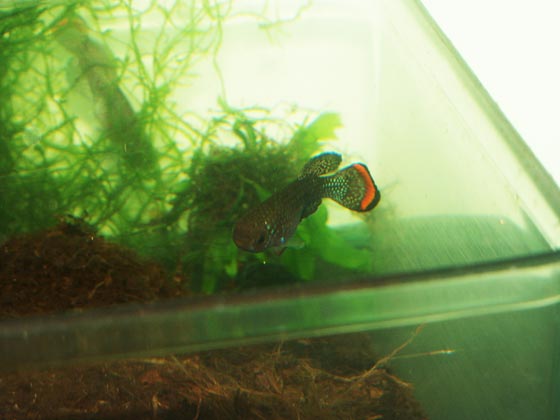
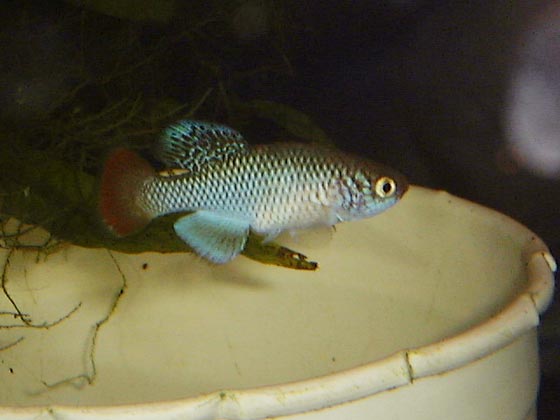
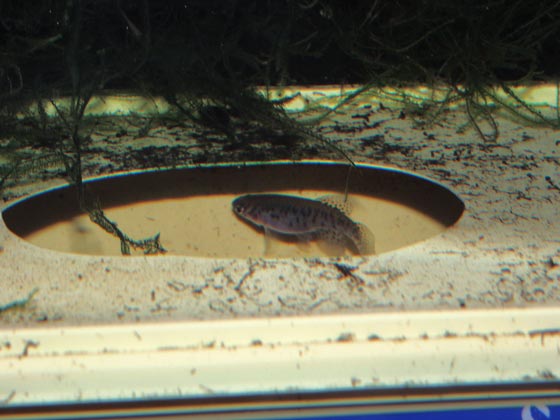
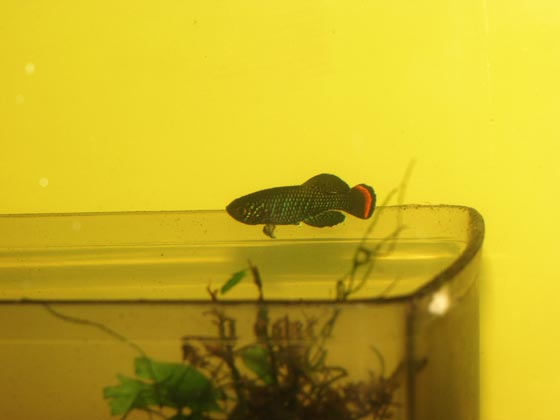
The Nothos will lay their eggs in the peat moss; it needs to be collected every week or two, so should be put in a container that will keep it all in place. Spawning will throw up some peat, so the container needs to be either 1) large enough not to let the peat out, probably 4 or 5 inches deep, or 2) lave a lid (with entrance hole). Such containers can be much smaller - like a typical margarine tub. Placing peat directly into the tank looks far more natural, but should be avoided: it is hard to collect, and mixes the peat with any decaying organic matter in the tank. This is far from an ideal situation except for the shortest of periods.
Very often, a male fish will wait above the peat (often inside the container) for a visit from the female.
When you hatch a batch of eggs (see Hatching annual killifish eggs), you will (hopefully) have tens, perhaps hundreds of fry. How you keep these fry is critical. One of the greatest problems experienced by all killifish keepers is a shortage of fish of one sex (often females). For this reason it is essential that as many fry reach maturity as possible, increasing the odds of ending up with numerous breeding pairs.
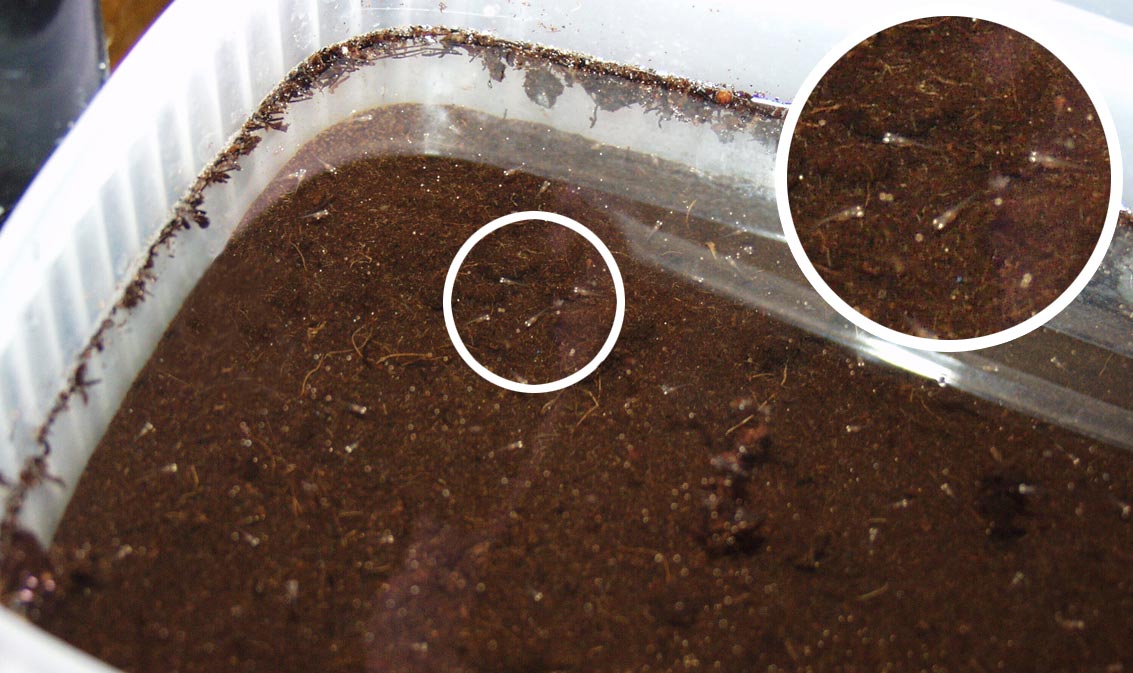
And the way to achieve this is to raise the fry together as a batch. This should be done in a bare tank (save a sponge filter) with no plants, no decorations and dimly lit. Feed the fish heavily with newly hatched artemia. It is important to feed heavily, as this allows all fish access to food at all times. A significant number of shrimp will die uneaten, so a large apple snail (or two) should also be kept in the tank to eat them as they die, preventing pollution of the water. This permanent access to food will diminish the chance of cannibalism, and give every fish a good chance at making it to adulthood.
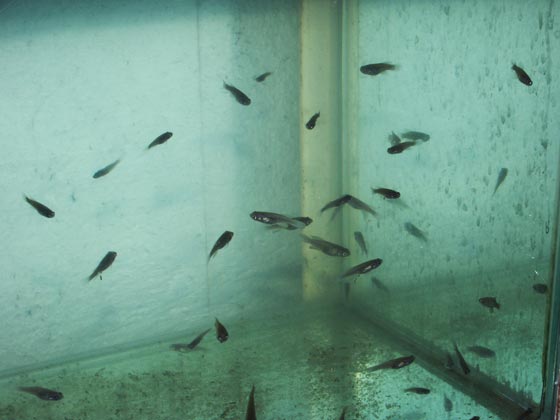
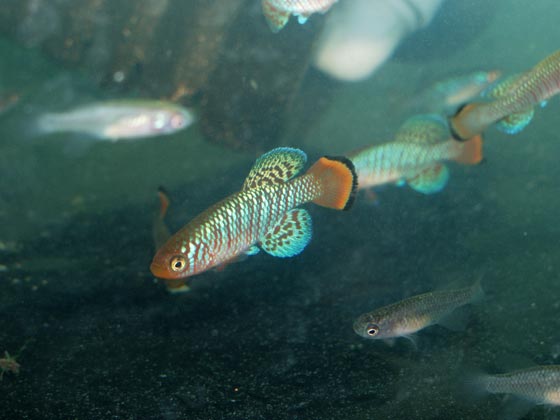
As the fish grow, other foods can be offered, but it is still very important to keep the tank bare and dimly lit. A largish tub of peat can be added, to give the young fish a chance to spawn, but nothing else should be used to decorate the tank. The idea is to prevent the formation of territories, reduce aggression between males, or at least spread it out to prevent bullying of the smaller individuals. Plants and rocks act as boundaries to territories, which males will try and defend, chasing away, and even fighting rivals. If there is no territory, and a high enough stocking density, such problems largely disappear.
As the fish grow, any individual that gets significantly larger than it's tankmates should be rehoused: these individuals are likely to predate on smaller (often female) fish.
Eventually, all fish will mature, and individuals can be rehoused as pairs/trios, breeding groups (see below), or passed on to other keepers. By this time, enough eggs will have been laid for a future generation of the species.
If you have a batch of nothos, you can keep them in a breeding group in a larger tank. As always, dim lighting will reduce aggression. You must have several males, probably a minimum of four or five; maybe less with comparatively peaceful species. Attempt to keep 2-3 females for each male. Put at least one or more spawning tubs in place. This type of set up is easily achieved if you raise a batch of fry to maturity, passing excess fish to other keepers, or as described having a Notho community tank. The only real limit to the number of fish you keep in such a set up is your ability to keep the water clean. Nothos are heavy eaters, and typical sponge or box filtration can only work effectively at certain stocking densities.
Nothobranchius males, like many fish species, will typically raise their fins when displaying to females, or challenging other males. They may flare their gills, and shake. Usually this is as far as it goes before one fish retreats, but on some occasions, and more so with certain species, things get rough. Nothos may lock jaws and shake each other. They may also bite and barge each other around. This can be a sign that you should reduce the lighting levels in your tank, or separate certain individuals. The pictures below show some Nothobranchius furzeri, one of the most aggressive species, sparring with each other. And they were in a fairly dark tank. Only the camera flash illuminates the scene for us.
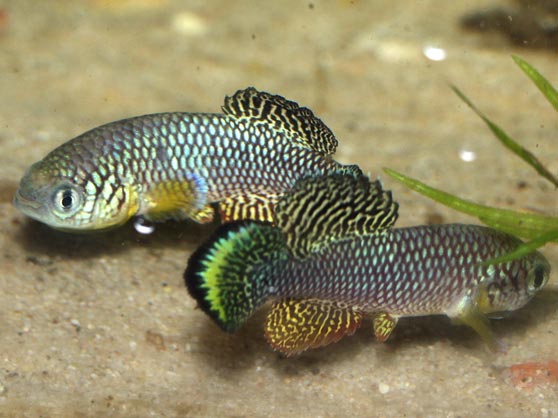
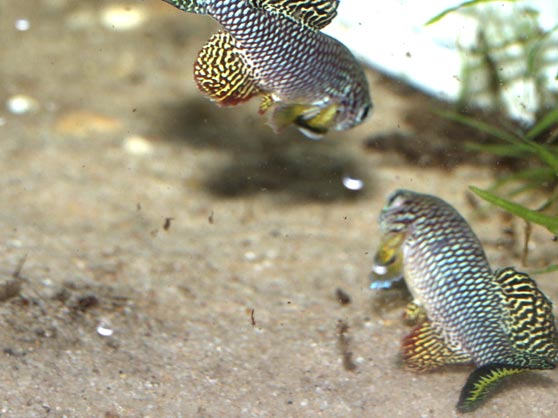
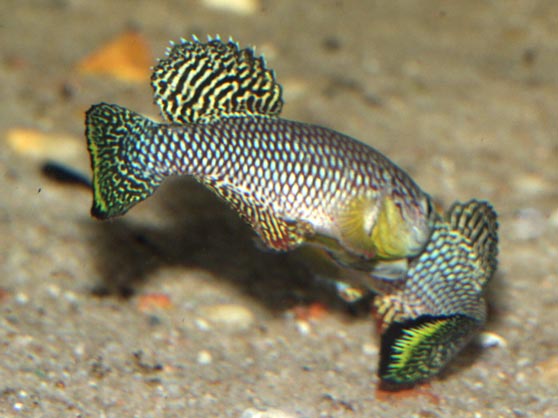
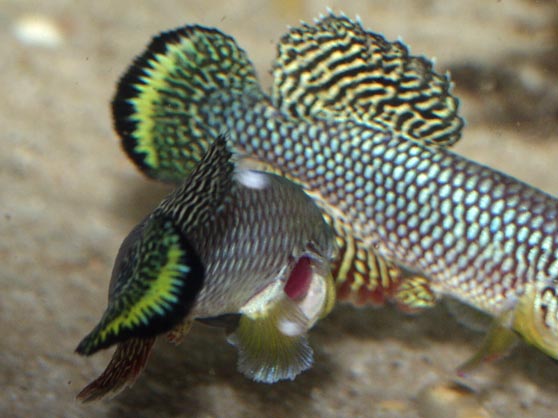
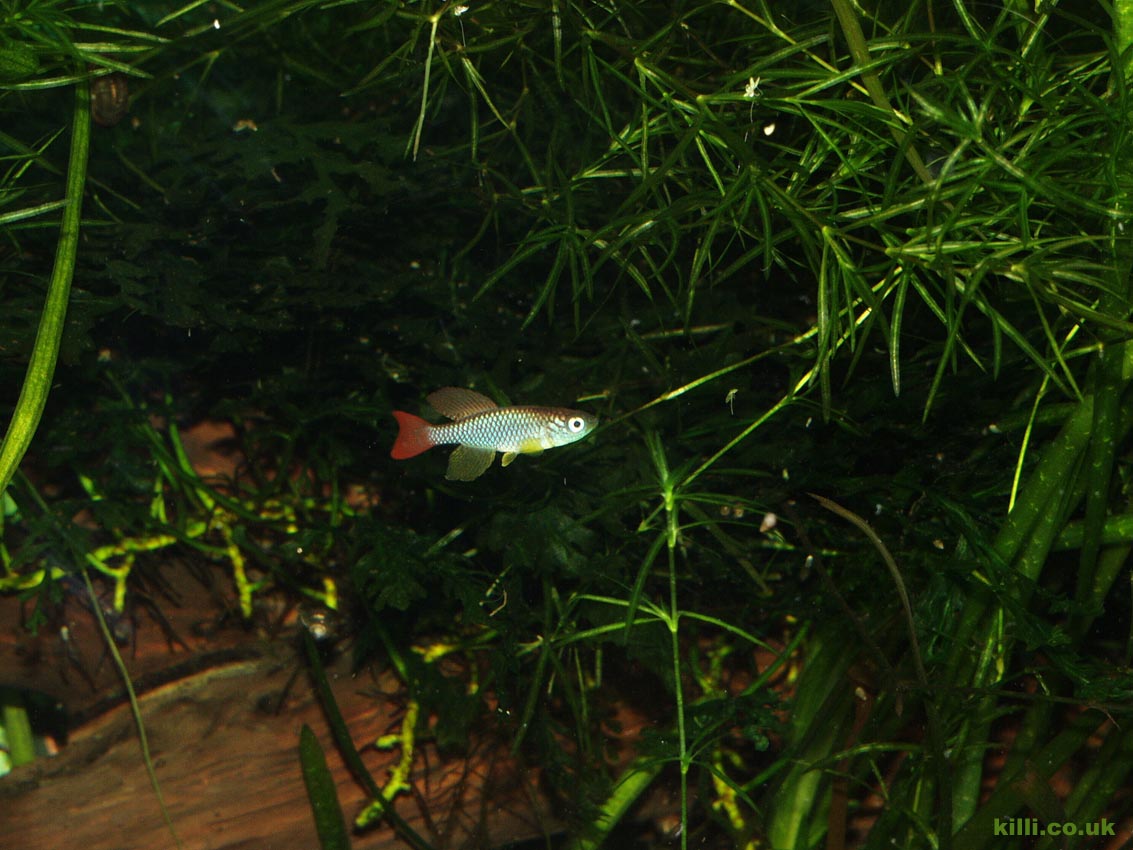
People are naturally attracted to Nothos because of their wonderful colouration. And an African biotope, or other nicely planted tank, stocked with bright male Nothos is very appealing. If you have no intention of breeding them, and merely want to stock a display aquarium, you can do so, but these fish are expensive and short lived. In a large well planted display tank many male nothos will get on just fine. Either keep a large tank sparsely populated or a small tank densely populated. They generally don't do well in a typical community situations, getting subdued, and unable to compete for food; but won't be disturbed by shoals of small shoaling fish (lampeyes are a good choice) and otherwise peaceful top dwellers.
But most nothos keepers have such a tank in which they keep their 'spares'. The result of a group of fry with excess males. Or a retirement home for older fish, past breeding age. If you can make contact with a serious notho breeder, you may be able to source spare males.
$22
$22
$22
$42
$26
$31
$17
$17
$25
€6
$21
$28
€5
€36